

Telangana, located in southern India, is the country's youngest state, formed on June 2, 2014. With Hyderabad as its capital, Telangana is known for its rich history, diverse culture, and rapid economic growth. The state is home to magnificent monuments, delicious cuisine, and vibrant festivals that showcase its unique identity. From the historic Charminar to the modern HITEC City, Telangana presents a perfect blend of tradition and progress.
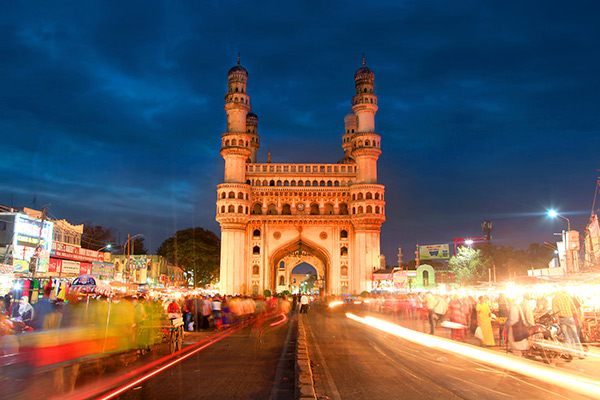
Telangana stands unique in Indian history as a region with a rich legacy of the Qutb Shahi and Asaf Jahi dynasties. The area was ruled by the Nizams of Hyderabad for over two centuries, creating a distinct cultural identity that sets it apart from other Indian states.
The Qutb Shahi dynasty established Golconda as their capital in the 16th century, transforming it into a major center for diamond trade and Islamic culture. Muhammad Quli Qutb Shah, the fifth ruler, founded Hyderabad in 1591 to address water shortages in Golconda. The iconic Charminar was built as the centerpiece of the new city.
In 1724, Asaf Jah I established the Asaf Jahi dynasty, whose rulers became known as the Nizams of Hyderabad. For the next 224 years, the Nizams ruled the princely state of Hyderabad, which included present-day Telangana, Marathwada, and parts of Karnataka. Under their rule, Hyderabad became known for its distinctive culture, architecture, and the famous Hyderabad pearls.
The Nizam period significantly influenced Telangana's society. The rulers were known for their religious tolerance, and the region became a melting pot of Hindu and Muslim cultures. This is evident in the state's festivals, which include both Hindu and Muslim celebrations, and its cuisine, which features unique dishes like Hyderabadi Biryani that combine local ingredients with Mughlai cooking techniques.
Telangana's integration into India came after Operation Polo in 1948, when Indian forces annexed Hyderabad State. However, the distinct Telangana identity remained strong, leading to the Telangana movement that eventually resulted in statehood on June 2, 2014.
Today, Telangana takes pride in this unique heritage. The monuments of Hyderabad, including the Charminar, Golconda Fort, and Chowmahalla Palace, attract visitors from around the world. The state's vibrant culture, often characterized by its distinctive Telugu dialect, folk arts, and cuisine, reflects this blended historical legacy.
Telangana's Nizami legacy is not just historical; it's a living tradition that continues to shape the state's identity. From the architecture of its buildings to the rhythm of its music and the flavors of its food, this heritage makes Telangana a fascinating example of cultural synthesis and resilience.
Telangana is known for its rich cultural heritage, which is reflected in its linguistic diversity. The state's language landscape showcases its unique history as a meeting point of Dakhini Urdu and Telugu cultures.
Telugu is the official language of Telangana and is spoken by the majority of the population. It belongs to the Dravidian language family and has a rich literary tradition dating back centuries. The Telugu spoken in Telangana has distinct features and vocabulary that differentiate it from the Telugu spoken in coastal Andhra.
The languages of Telangana reflect its unique position as a cultural crossroads. While Telugu remains the heart of Telangana identity, the presence of Urdu, tribal languages, English, and Hindi creates a rich linguistic tapestry that mirrors the state's history as a meeting point of Northern and Southern cultures.
Telangana's festivals reflect its unique blend of Hindu and Muslim traditions, creating a cultural calendar that is vibrant, colorful, and inclusive. From religious processions to harvest celebrations, Telangana festivals showcase the state's joyful spirit and cultural diversity.
Bonalu is the most famous and eagerly awaited festival in Telangana, known for its vibrant processions, colorful offerings, and traditional folk dances. This folk festival has become an integral part of Telangana culture and attracts participants from all communities.
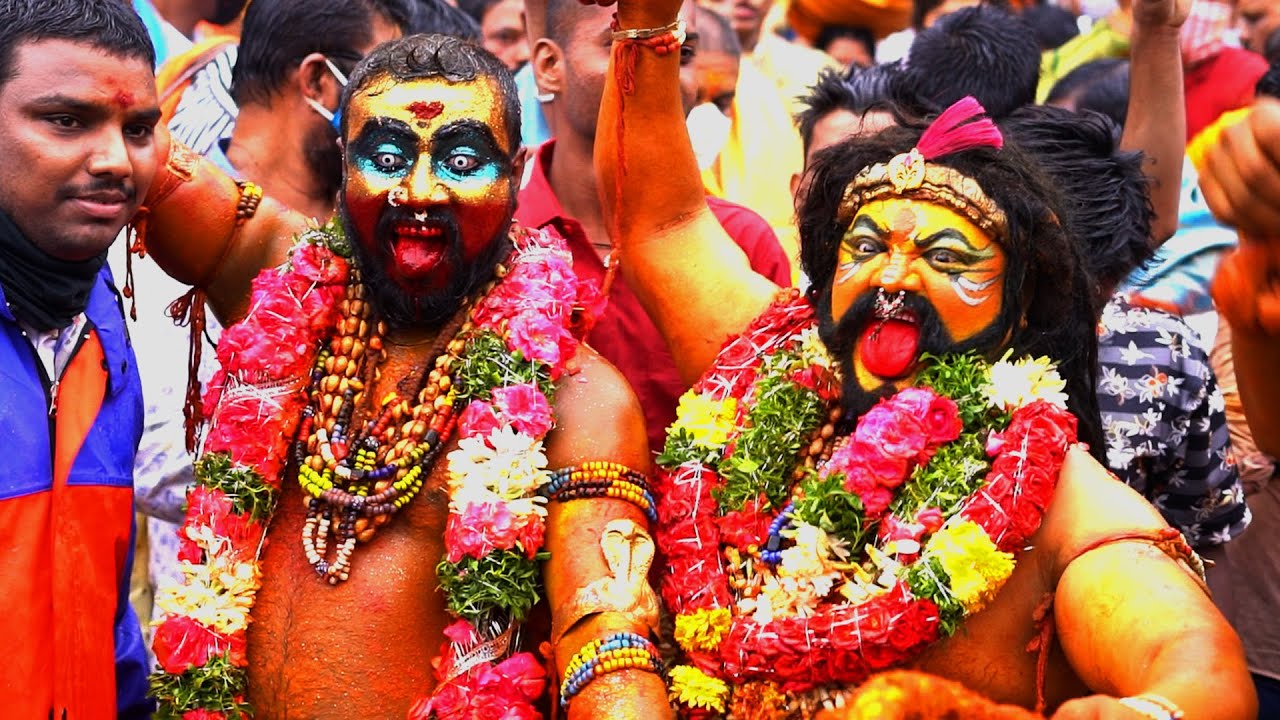
The Bonalu festival is more than just a religious observance; it is a celebration of Telangana's folk culture that transcends religious and cultural boundaries. With its vibrant processions, traditional music, and community spirit, Bonalu perfectly embodies Telangana's unique identity as a place where different cultures coexist harmoniously.
Bathukamma is a unique floral festival celebrated exclusively by women in Telangana. This nine-day festival celebrates the beauty of nature and feminine energy, with women creating beautiful flower stacks and singing folk songs. The festival culminates in the immersion of these floral arrangements in water bodies.
Bathukamma, which means "Mother Goddess come alive," is dedicated to Goddess Gauri. The festival begins a week before the grand finale of Saddula Bathukamma, which coincides with Mahalaya Amavasya. Women prepare special dishes, wear traditional attire, and gather in groups to celebrate this vibrant festival.
Bathukamma is a testament to Telangana's unique cultural traditions and its celebration of nature and womanhood. The devotion and artistry displayed during this festival reflect the creative spirit of Telangana's women and their connection to their cultural heritage.
Eid celebrations in Telangana, particularly in Hyderabad, are grand affairs that showcase the state's composite culture. The festivals are marked by prayers, feasts, and community gatherings that bring together people of all faiths.
Eid celebrations represent the rich Islamic heritage of Telangana, showcasing traditional practices and community spirit. As festivals that have been celebrated for centuries in the region, they connect modern Telanganites to their historical roots while adapting to contemporary times.
The festivals of Telangana showcase its unique cultural synthesis, where Hindu, Muslim, and Christian traditions coexist and often influence each other. This harmonious blend of celebrations reflects the spirit of Telangana - joyful, inclusive, and deeply rooted in both indigenous and historical influences.
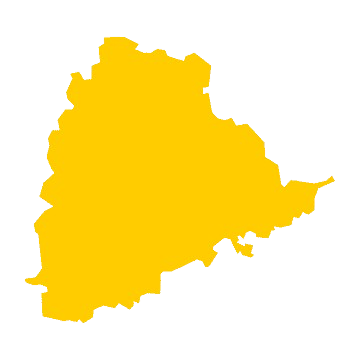
Telangana, India's youngest state, is one of the country's most dynamic regions. Known for its historic monuments, IT industry, and rich cultural heritage, Telangana offers a unique blend of tradition and modernity. Each city in Telangana has its own distinct character, contributing to the state's reputation as the "Seed Bowl of India" and a growing technological hub.
Hyderabad, the capital city of Telangana, is known as the "City of Pearls" and "City of Nizams." Located on the banks of the Musi River, it serves as the economic, cultural, and technological hub of the state. Hyderabad beautifully balances its historic charm with rapid modernization, creating a unique urban experience.
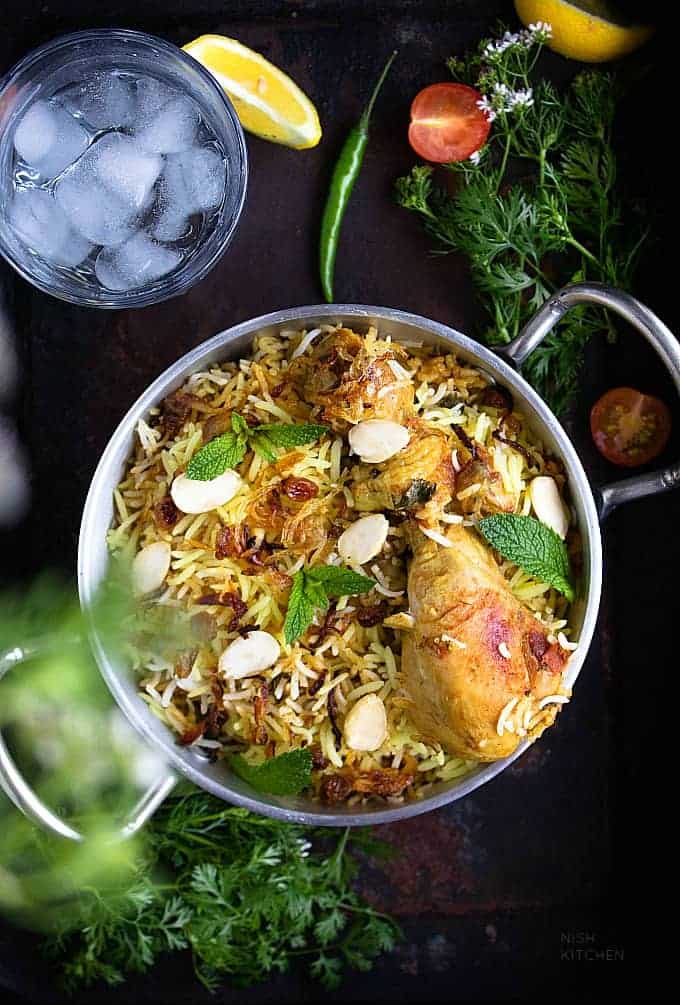

The Charminar is the most recognizable landmark of Hyderabad, built in 1591 by Muhammad Quli Qutb Shah. This magnificent structure features four grand arches facing different directions, with minarets rising from each corner. It was constructed to commemorate the end of a plague in the city and served as the centerpiece of the new city of Hyderabad.

The Charminar stands at the intersection of the historical trade route that connects the markets of Golconda with the port city of Machilipatnam. The structure is built with granite and lime mortar, with intricate stucco decorations. Each minaret is 56 meters high and contains a spiral staircase of 149 steps leading to the top floor, which offers a panoramic view of the city.
Today, the Charminar is not only a place of worship but also a major tourist attraction and symbol of Hyderabad. The surrounding area, known as the Charminar Bazaar, is a bustling market selling pearls, bangles, and traditional Hyderabadi items. The monument represents the rich history and cultural heritage of Telangana, attracting visitors from around the world.
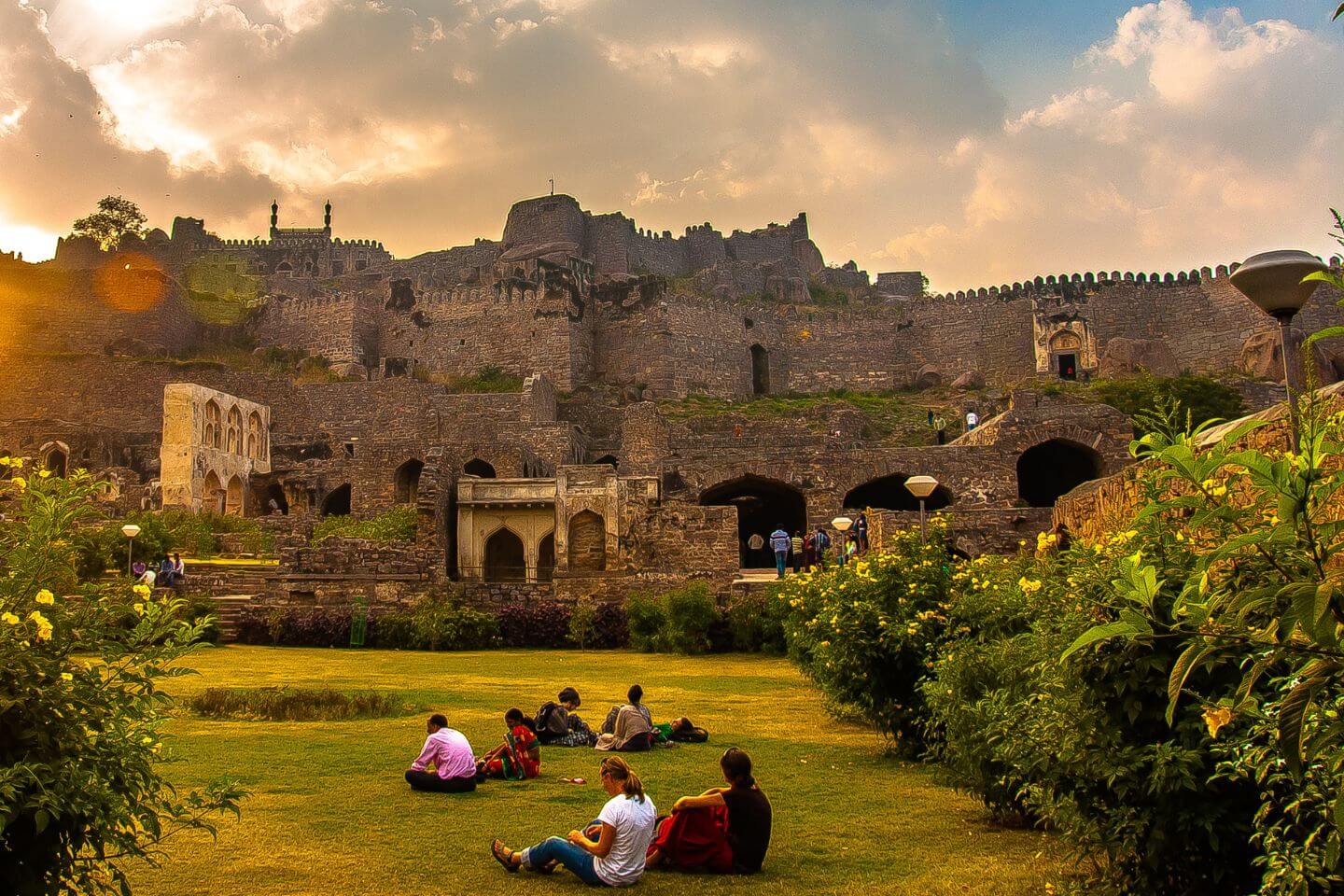
Golconda Fort is a massive fortress located about 11 km from Hyderabad. Originally built by the Kakatiya dynasty in the 13th century, it was later fortified and expanded by the Qutb Shahi kings. The fort is famous for its military architecture, royal palaces, and ingenious water supply system.
The fort complex spans approximately 11 km and features multiple concentric walls, eight gateways, and numerous royal apartments, temples, mosques, and stables. The most remarkable feature is its acoustic system - a hand clap at the entrance gate can be heard at the highest point of the fort, used as a warning system against invaders.
Golconda was once known for its diamond mines, producing famous diamonds like the Koh-i-Noor, Hope Diamond, and Daria-i-Noor. The fort's Fateh Darwaza (Victory Gate) was where the victorious army of Aurangzeb entered after a nine-month siege that ended Qutb Shahi rule.
Today, Golconda Fort is a major tourist attraction known for its sound and light show that narrates the fort's history. The climb to the top rewards visitors with a panoramic view of Hyderabad. The fort represents the military might and architectural brilliance of the Deccan sultanates and remains an important symbol of Telangana's heritage.

Hussain Sagar is a heart-shaped lake in Hyderabad built in 1563 by Ibrahim Quli Qutb Shah. Located between Hyderabad and Secunderabad, it was originally built to meet the water and irrigation needs of the city. The lake spans an area of 5.7 square kilometers and is fed by the Musi River.
The most prominent feature of Hussain Sagar is the massive monolithic statue of Buddha installed in the middle of the lake. Standing at 18 meters tall and weighing 350 tons, the statue was erected in 1992 and has become an iconic symbol of Hyderabad. The statue is located on Gibraltar Rock in the middle of the lake and is accessible by boat.
The lakefront has been developed into a popular recreational area with parks, eateries, and entertainment options. The Necklace Road, which circles the lake, is a favorite spot for joggers, walkers, and families. The lake also hosts various events and festivals throughout the year, including the spectacular laser show that illuminates the fountains in the evening.
In recent years, Hussain Sagar has undergone significant restoration to improve water quality and enhance its appeal. The lake represents Hyderabad's commitment to preserving its natural and cultural heritage while providing recreational spaces for its residents and visitors. It stands as a testament to the city's ability to blend history with modernity.
Ramoji Film City, located on the outskirts of Hyderabad, is the world's largest integrated film studio complex. Spread over 2,000 acres, it was established in 1996 by Ramoji Rao, the head of Ramoji Group. The film city has been certified by the Guinness World Records as the largest film studio complex in the world.
The facility includes numerous outdoor sets representing different environments - from American urban landscapes to Indian villages, Japanese gardens to royal palaces. It features permanent sets, gardens, thematic locations, and advanced production facilities that can accommodate multiple film shoots simultaneously. The film city has its own airport, hotels, and support facilities to cater to film crews.
Beyond being a working studio, Ramoji Film City is a major tourist attraction offering guided tours, entertainment shows, and adventure activities. Visitors can experience behind-the-scenes filmmaking processes, watch live shows, and explore the various themed areas. The facility also hosts events, conferences, and weddings in its expansive premises.
Ramoji Film City has played a significant role in establishing Hyderabad as a major film production hub in India. It has attracted filmmakers from across India and internationally, contributing to the growth of Telugu cinema and the local economy. The film city represents Telangana's emergence as a center for entertainment and creative industries, complementing its technological advancements.
Hyderabad embodies the essence of Telangana with its blend of historic heritage and contemporary progress. As the state capital, it offers cultural richness, historical significance, and modern amenities while maintaining a unique character. From its historic monuments to its thriving IT sector, Hyderabad is a city that captures the heart of every visitor and represents the dynamic spirit of Telangana.
Warangal, located in northern Telangana, is known for its rich historical significance as the capital of the Kakatiya dynasty. The city is famous for its magnificent temples, fortifications, and architectural marvels that showcase the glory of medieval South India.
Warangal offers a glimpse into the glorious past of Telangana, balancing historical preservation with contemporary life. As the historical capital of the region, it showcases the state's heritage through its architecture, traditions, and cultural practices. For visitors seeking to understand Telangana beyond its modern cities, Warangal provides an enriching experience of the state's medieval legacy.
Karimnagar, located on the banks of the Manair River, is known as the cultural hub of Telangana. The city has a rich history dating back to the Satavahana period and serves as an important center for education, commerce, and traditional arts in the northern part of the state.
Karimnagar represents the cultural heartland of Telangana, where tradition and modernity coexist harmoniously. As a cultural hub, it showcases the state's artistic heritage through its handicrafts, festivals, and historical sites. For those seeking to experience the authentic cultural traditions of Telangana, Karimnagar offers valuable insights into the region's rich legacy.
Nizamabad, located in northwestern Telangana, is known as an important agricultural center and historical city. The city derives its name from the Nizams of Hyderabad and has a rich history dating back to ancient times. Nizamabad serves as a major commercial hub for the surrounding agricultural region.
Nizamabad represents the agricultural backbone of Telangana, where traditional farming practices thrive alongside modern agricultural techniques. The city's vibrant markets, especially the turmeric market, offer an authentic experience of Telangana's rural economy. For those seeking to understand the agricultural heritage of the state, Nizamabad provides valuable perspectives on Telangana's role as the "Seed Bowl of India."
Khammam, located on the banks of the Munneru River, is known as an emerging industrial city in Telangana. The city has a rich history dating back to medieval times and is developing as an important center for industry, education, and commerce in the eastern part of the state.
Khammam represents the industrial potential of Telangana, balancing economic development with cultural heritage. As an emerging industrial city, it showcases the state's progress in diversifying its economy beyond agriculture. The combination of historical sites, natural beauty, and industrial growth makes Khammam an important destination for understanding Telangana's development trajectory.
The cities of Telangana each contribute uniquely to the state's character. Hyderabad represents the administrative and technological heart, Warangal the historical legacy, Karimnagar the cultural traditions, Nizamabad the agricultural base, and Khammam the industrial potential. Together, these urban centers showcase the diversity that makes Telangana much more than just a newly formed state—they reveal a region with rich history, vibrant culture, and multiple economic engines that balance tradition with progress. From Nizami-influenced architecture to Kakatiya temple complexes, from bustling IT campuses to traditional markets, Telangana's cities offer experiences that capture the essence of this dynamic Indian state.
Telangana food is a delightful blend of Telugu, Hyderabadi, and other influences, creating a unique culinary tradition known for its bold flavors, generous use of spices, and diverse vegetarian and non-vegetarian specialties. The cuisine reflects Telangana's agricultural abundance and its history as part of the Hyderabad State.
Hyderabadi Biryani is the quintessential Telangana dish, known worldwide for its aromatic flavors and perfect blend of spices. This royal dish consists of basmati rice and meat (usually chicken or mutton) cooked together with a unique combination of spices.
Hyderabadi Biryani is more than just a meal; it's a symbol of Telangana's royal heritage and cultural diversity. Its complex preparation and rich flavors have evolved over centuries, making it the crown jewel of Telangana culinary tradition.
Sarva Pindi is a traditional Telangana snack that exemplifies the region's rural culinary traditions. This savory rice flour pancake is a popular breakfast item and tea-time snack, known for its unique texture and flavor.
Sarva Pindi is a perfect example of Telangana's rural culinary heritage, where simple ingredients are transformed into flavorful and nutritious food. Its unique preparation and satisfying taste tell the story of Telangana's agricultural roots and its ability to create delicious food from locally available ingredients.
Double Ka Meetha is a traditional Hyderabadi dessert that is as rich in history as it is in flavor. This bread pudding soaked in sweet syrup represents the sweet side of Telangana cuisine and is a staple at festive occasions.
Double Ka Meetha is more than just a dessert; it's a taste of Hyderabadi royalty that embodies the festive spirit of Telangana. Each layer represents the care and tradition that goes into Telangana cooking, making it a fitting conclusion to any Telangana meal and a sweet representation of the state's cultural heritage.
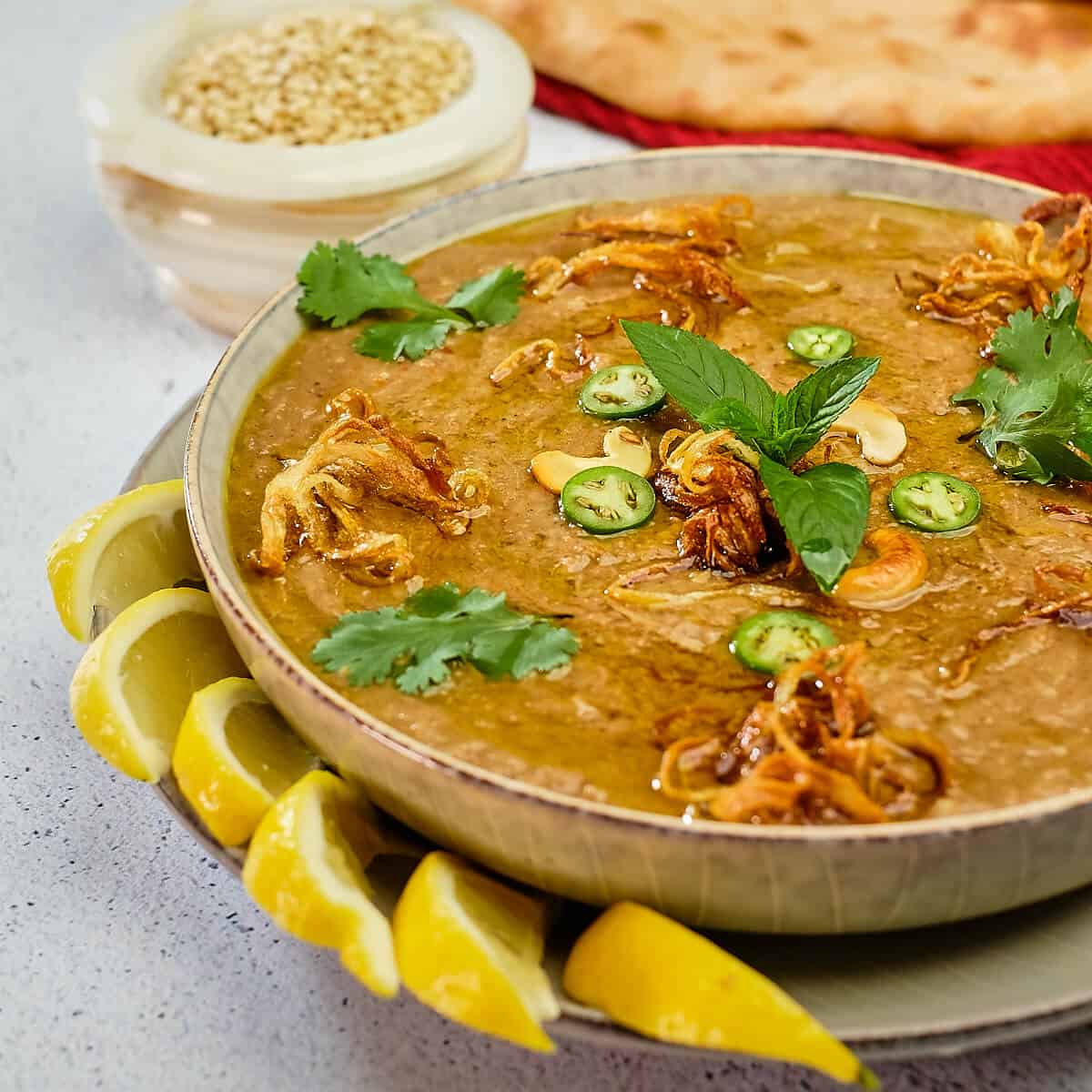
A rich stew of meat, lentils, and wheat, traditionally eaten during Ramadan.

A tangy pickle made from sorrel leaves, a Telangana specialty.

A spicy chicken curry that is a staple in Telangana households.
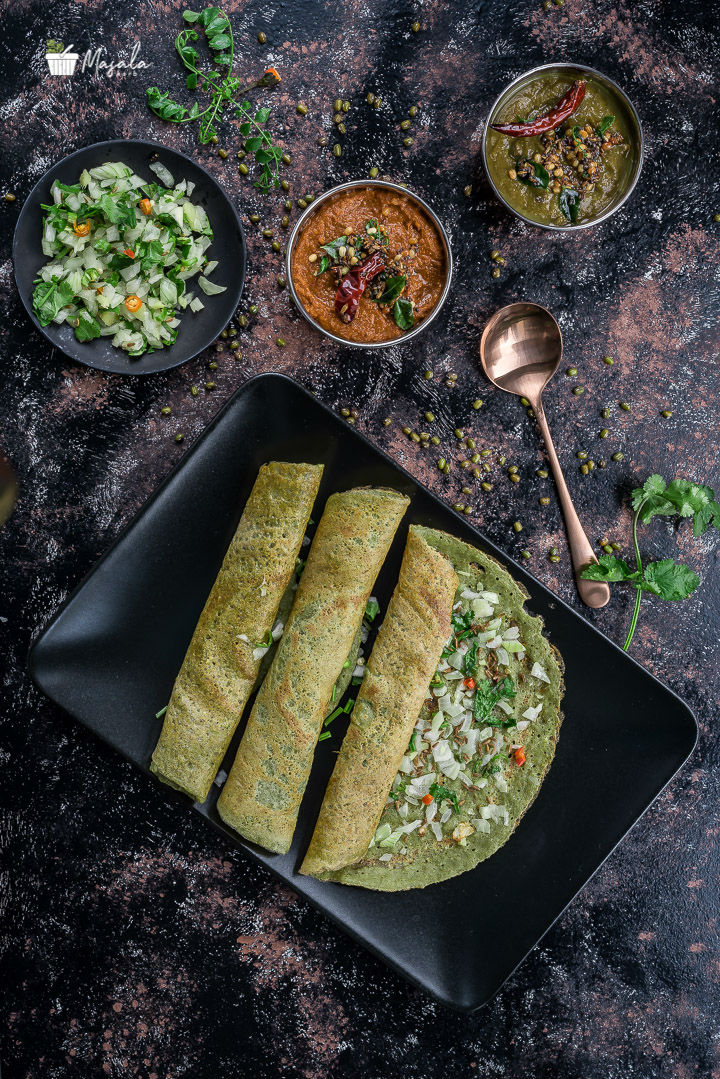
A healthy crepe made from green gram, typically served for breakfast.
Telangana cuisine is a vibrant tapestry woven from indigenous Telugu traditions and Hyderabadi influences, with additional touches from other cultures that have interacted with the region over centuries. From the royal indulgence of Hyderabadi Biryani to the humble comfort of Sarva Pindi, Telangana food tells the story of a people who have mastered the art of blending flavors and traditions. Each dish is not just nourishment but a celebration of Telangana's unique cultural identity and its position as a meeting point of Northern and Southern culinary traditions.
Telangana fashion is a vibrant reflection of its agricultural heritage, Nizami influences, and rich cultural diversity. From traditional attire that tells stories of rural life to contemporary styles influenced by urban Hyderabad, Telangana clothing represents a unique blend of comfort, elegance, and cultural identity. The fashion scene in Telangana beautifully balances tradition with modernity, creating a distinctive style that is both functional and aesthetically pleasing.
Did you know? Telangana fashion is heavily influenced by its agricultural roots, with earthy colors and natural fabrics dominating traditional attire, complemented by the luxurious fabrics and intricate embroidery of Hyderabadi fashion.
Traditional Telangana men's attire reflects the state's rural heritage combined with Hyderabadi sophistication. From formal occasions to everyday wear, these garments showcase a unique cultural fusion that has evolved over centuries.

Traditional Telangana men's fashion represents the harmonious blend of rural and urban influences. The adoption of Hyderabadi elements during the Nizam period was balanced with the retention of rural traditions, creating a unique sartorial identity that distinguishes Telanganites from other Indian communities.
Telangana women's traditional attire is a beautiful amalgamation of rural simplicity and Hyderabadi elegance. The clothing reflects both practicality for the agricultural lifestyle and aesthetic considerations influenced by centuries of cultural exchange.



Women's fashion in Telangana tells a story of cultural adaptation and preservation. The distinct styles between rural and urban communities showcase how different influences were integrated while maintaining unique identities. The practicality of rural clothing reflects Telangana's agricultural economy, while the decorative elements of urban fashion celebrate its royal heritage.
Telangana textiles reflect the state's agricultural heritage, cultural diversity, and historical trade connections. The fabrics used in traditional clothing prioritize comfort, breathability, and suitability for the region's climate.
The textile traditions of Telangana have evolved significantly over centuries. Pre-Nizam era textiles were primarily simple cottons with minimal decoration. During Nizam rule, luxurious fabrics and techniques were introduced, leading to a fusion style that incorporated brocade, silk, and more elaborate designs. Post-state formation, there has been a revival of traditional techniques alongside increased experimentation with contemporary materials.
Contemporary Telangana fashion represents a dynamic blend of traditional elements with global influences, heavily shaped by urbanization, Bollywood, and the state's cosmopolitan culture. The modern Telangana wardrobe seamlessly transitions from traditional attire for festivals to contemporary styles for daily wear.
Traditional Telugu clothing dominated, with simple cotton garments suited for the agricultural lifestyle.
Nizami influence introduced luxurious fabrics, intricate embroidery, and sophisticated cuts, creating a unique Deccani fusion style.
Post-independence period saw a blend of traditional Telangana, mainstream Indian, and Western fashions as the region integrated with India.
State formation and globalization accelerate fashion evolution, with Telangana designers gaining recognition for fusion styles that honor tradition while embracing modernity.
Telangana has produced several fashion designers who have gained national and international recognition for their work that often incorporates Telangana cultural elements.
Telangana fashion is a dynamic and evolving expression of the state's unique cultural identity. Rooted in practical considerations for agricultural life and shaped by centuries of cultural exchange, it represents a harmonious blend of rural and urban influences. From the traditional sarees of rural women to the sophisticated sherwanis of Hyderabadi men, Telangana clothing tells a story of adaptation, creativity, and pride in cultural heritage.
As Telangana continues to navigate the intersection of tradition and modernity, its fashion scene remains a vibrant reflection of this balance. The growing recognition of Telangana designers on national and international platforms suggests an exciting future where traditional Telangana elements will continue to influence broader fashion trends while adapting to contemporary sensibilities.
Future Trends: The next decade will likely see increased emphasis on sustainable practices, technological integration in textile production, and further innovation in fusion wear that respects traditional craftsmanship while embracing global fashion currents.